Their sixth and newest member is Dan Moroboshi, who unbeknownst to them is in fact Ultraseven – an alien from the Land of Light in Nebula M-78. After rescuing a mountain climber during his visit to Earth, Ultraseven decides to assume human form to help protect the planet he’s fallen in love with. When the combined efforts of the Ultra Garrison just aren’t enough, Dan uses the Ultra Eye to transform into the mighty Ultraseven – capable of growing to giant size as well as a number of other incredible feats.
This use of the Ultra Garrison is what really helps to raise the bar Ultraman had previously set. Dan Moroboshi is a hero because he's Ultraseven, but he's also a hero because he's Dan Moroboshi. It feels like there's much wider recognition of and respect for the Ultra Garrison than there was of the SSSP, and a joy to watch them as heroes as much as it is Ultraseven show up. Each member of the team brings their own strengths to the team in terms of both skills and personalities, as well as getting their own focus episodes throughout the show to solidify their importance. Even Anne, who initially feels stereotypically shafted in her role as medic, quickly ends up participating in field missions and becoming a more active member of the team. The capability of the Ultra Garrison without the aid of Dan or Ultraseven is put to the test again and again over the course of the show, but the two-part The Seven Assassination Plan (episodes 39 and 40) brings it to the forefront in spectacular fashion.
Originally perceived as being a completely separate entity to Ultraman, Ultraseven’s powers slightly differ from that of his predecessor. As well as having no clear limitation on how long he can sustain his transformed state, Ultraseven is also able to operate at both human and microscopic size – adding a wider variety of possibilities to the episode climaxes. The addition of a physical weapon to Seven’s arsenal also amps up the violence factor, as Ultraseven well and truly kicked off an era of aliens and kaiju alike being maimed, decapitated or even just plain sliced in two. But whereas the actions of Ultraman would often feel questionable when faced with non-malicious creatures, Ultraseven has a much clearer focus on alien invasions and outright attacks. Like the previous series it also features plenty of creatures that have stood the test of time, with the likes of Metron, Guts, Eleking and Pandon all showing up again in future Ultra shows.
Another concept which Ultraseven toys with but never fully commits to is capsule monsters - good natured kaiju that can be summoned by Dan to take his place on the battlefield if need be. Early episodes make it seem that the capsule monsters would form a big part of Ultraseven, but in reality their usage is fleeting and rarely takes precedent over a proper Ultraseven skirmish. The concept itself adds an extra level to the show though, and feels even more impressive coming from decades before franchises like Pokemon turned around and made it their own.
Seven’s battles are only part of the picture though, and with this much bigger scope Ultraseven also explores and employs other methods in its storytelling. The influence Gerry Anderson’s various works had on Tsuburaya particularly shine through the show’s numerous vehicles, launch sequences and aerial dogfights. Underground Go! Go! Go! (episode 17) is a glorious love letter to Thunderbirds, complete with Thunderbird 2-esque carrier and the Magma-lizer – Tsuburaya’s answer to fan-favourite auxiliary vehicle ‘the Mole’. This element of the show is where all the special effects and miniature work truly take centre stage, as the focus is solely on them and a suit actor. That isn't to take any credit away from the incredible cityscapes and countryside arenas where Ultraseven's battles take place, because they are just as meticulously detailed and truly a sight to behold.
In tandem to that the show doesn’t forget its roots either, mirroring fantastic setups that are right out of Ultra Q’s playbook. Nightmare on Planet 4 (episode 43) is a prime example, whisking Dan and Soga off to a world where humanity has been overthrown and enslaved by robots. In a world where robotics are quickly advancing and our dependence on technology is cynically addressed in shows like Black Mirror, episodes like these feel even more on the nose than they did way back in 1967. Similarly Ultraseven doesn't shy away from social or political commentary, as was best highlighted in the show's now "lost" twelfth episode, From a Planet With Love. Remarking on the dangers and effect of nuclear war, the episode is now banned in Japan after offending victims of the atomic bombings. While one can't really fault Tsuburaya for the stance they've taken on the episode since, it is a shame to see one of Ultraseven's most powerful and haunting episodes seemingly lost to the ages. It's well worth your time to track down Megabeast Empire's fansub of the episode, which uses rough video footage from the American TNT broadcast together with an audio recording produced by fan when it originally aired. The quality is rough, but it's impact certainly isn't lessened.
Ultraseven is often cited as one of the greatest tokusatsu science fiction series of all time, and it isn’t hard to see why. Throughout his career Eiji Tsuburaya continued to revolutionise special effects in Japanese television and cinema, so it seems fitting that his final work be one of his greatest. Ultraseven takes the core concepts that made Ultraman so memorable and expands them tenfold, creating a series that overflows with energy, imagination and craftsmanship. Like its predecessor, Ultraseven is as much a piece of history as it is enjoyable – a landmark series that not only stands the test of time but also still feels unrivalled 50 years later.


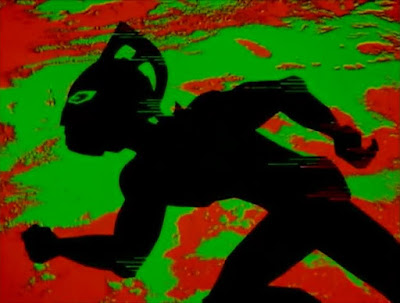


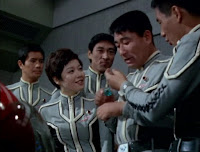

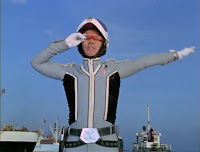
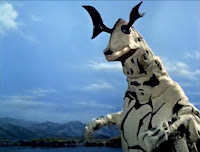
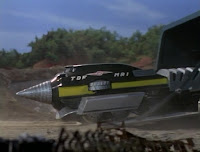
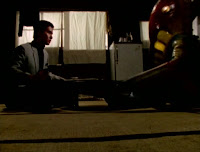
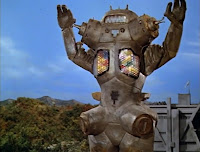
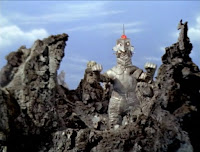

1 comment:
Ultraseven is a great show! It was very creative in that each alien was very unique, and many had unique plots for take-over and destruction, schemes and weapons (poisoned cigarettes, toys, etc.). I love the King Joe double episode. It took the ideas of the original Ultraman and expanded on them, making for a classic series.
Post a Comment